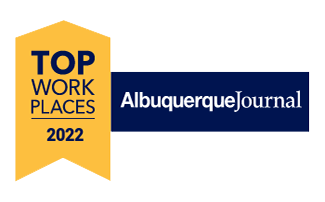
Statewide Training Opportunities.
Trainings available to the public across New Mexico
Family Weekend on Campus:
Parents, mark your calendars for this weekend. This will be an on-campus learning event for you and your child to experience VI skills in fun and engaging ways. As has become our tradition, we will be hosting a Family Weekend on Campus November 4-6th! Family Weekend on Campus is designed to be a time for families to see your child's learning environment, meet staff face-to-face that you often only get to know by phone, and learn skills and information that may help you support your child more effectively. We also strive to incorporate fun and great food into the weekend!
2017 Western Regional Early Intervention Conference (WREIC)
The Western Regional Early Intervention Conference (WREIC) is designed to support professionals working with, and families of, children birth to five years old who are deaf/hard of hearing, blind/visually impaired, or deaf-blind. WREIC has been in place for over 30 years, making it one of the longest running, ongoing early intervention conferences in the country. For more information, please click on the links below:
Select this link for Contact InformationLow Vision Clinics:
offer a special examination to determine if a student's visual abilities can be improved. At the low vision clinic, a doctor of optometry who has received specialized training in working with children with visual impairments will measure how well the student sees things that are close and things that are distant, and will determine whether any low vision devices will help the student. If a near or distance low vision device is recommended, the student will have additional opportunity to explore using the device(s) with the guidance of members of the Low Vision Clinic Team. More information...
Babies Count: Launching Spring 2016
The face of blindness is changing...ARE WE READY?
A reliable, confidential, national registry for infants and toddlers, birth to 36 months who are blind or visually impaired is currently in development.
Data from this registry will be used to inform the field about the prevalence of visual impairment, identify the leading causes of visual impairment in young
children; pin point areas in our states where young children with visual impairment are clustered; and provide data for medical researchers, ophthalmologists,
educational research, program development, and university preparation programs.
This database will only work if, together, we commit to creating systems in our states that will help us collect this essential data. The collaboration that
made this database possible includes: the American Printing House for the Blind Foundation, the International Preschool Symposium, Western Pennsylvania School
for Blind Children, Perkins’ School for the Blind, The Seeing Eye, Junior Blind, American Foundation for the Blind, the New Mexico School for the Blind and
Visually Impaired Foundation and the New Mexico School for the Blind (NMSBVI).
Will you join us?
For more information, contact Linda Lyle, NMSBVI Superintendent via e-mail.
Other Resources
NMAER
Officers:
Sheila Thorton, Past-Chair
Email Shiela Thorton
Linda Lyle, Chair
Email Linda Lyle
Dr. Loana Mason, Chair-Elect
Email Loana Mason
Luanne Stordahl, Secretary/Treasurer
Email Luanne Stordahl
AER Web Site
Brain Gym
NMSBVI - Brain Gym Video
In the video above, NMSBVI Alamogordo Preschool Instructor, Ms. Mary Vaughn demonstrates and explains the benefits of an exercise called "Brain Gym". She performs these exercises
with her students before having them do developmental tasks and activities. The results have shown an increased attention span, increased memory skills and ability
to predict or expect certain outcomes, and an increased overall ability to learn and develop important motor skills. Since implementing "Brain Gym" into her daily
routine students have exhibited great progress all around.
Other NMSBVI Instructors have also noticed the benefits of Brain Gym in teaching students who are blind or visually impaired. By making contact with parts of the
body such as an arm or a leg, we increase the student's perioperception (sense of limbs in space) and give them an awareness of themselves and their abilities to
touch and explore the world around them using those limbs.


